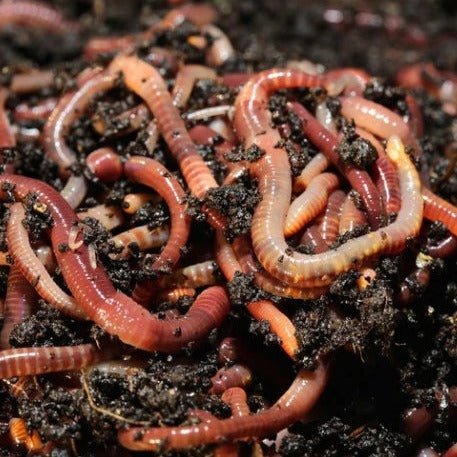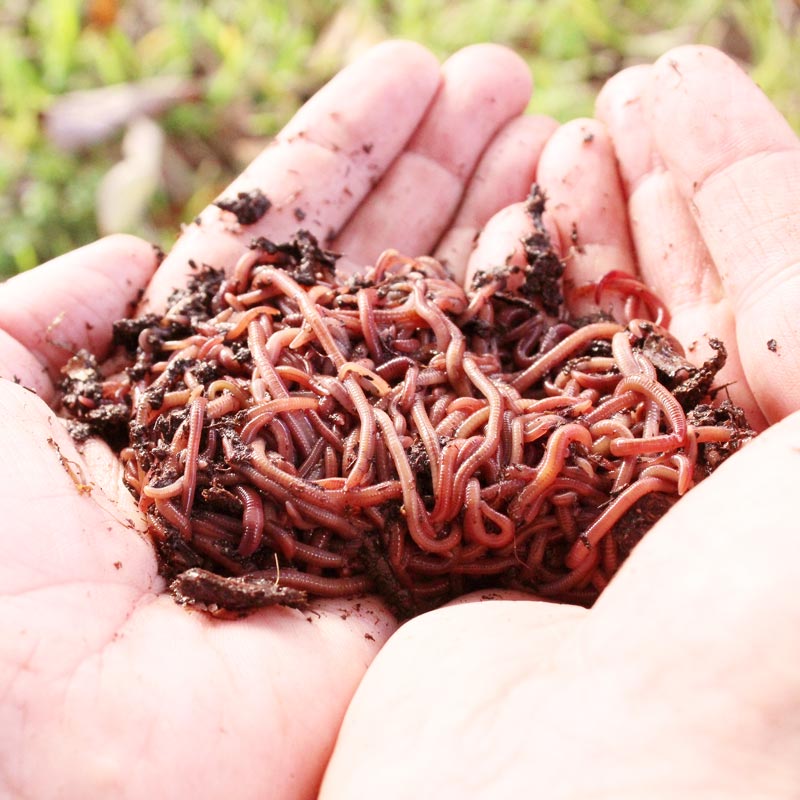Maximize Lawn Growth with Top-Rated Products from Red Wiggler Express
The Amazing World of Red Wigglers: Increase Your Dirt Fertility Today
The duty of red wigglers, or Eisenia fetida, in improving soil fertility is a subject of growing rate of interest among gardeners and farming experts. These small yet reliable microorganisms change organic waste right into useful worm castings, dramatically boosting soil health and advertising sustainable techniques. As we check out the benefits of vermicomposting and the functional actions to produce a reliable worm container, the potential influence of these worms on your gardening success becomes progressively apparent. Recognizing the nuances of their care and application may simply alter the way you approach dirt administration. What insights can be gotten from integrating these impressive creatures into your gardening routine?
Recognizing Red Wigglers
Red wigglers, scientifically referred to as Eisenia fetida, are a varieties of earthworm that play a vital duty in improving dirt fertility. These worms grow in organic-rich environments, such as compost stacks and rotting plant material, where they take in natural waste and excrete nutrient-dense castings. Their one-of-a-kind anatomy, including a fractional body and a clitellum, permits them to reproduce rapidly and effectively process large amounts of raw material.

The environmental importance of red wigglers extends past simple waste processing; they add to the soil food internet, promoting a diverse area of bacteria that further improve soil health. Understanding the biology and actions of red wigglers is necessary for using their complete capacity in sustainable farming and gardening methods.
Advantages of Vermicomposting
(Lake Hickory Bait)Utilizing the power of red wigglers via vermicomposting deals many benefits that substantially enhance dirt health and fertility. One of the main benefits is the production of nutrient-rich worm spreadings, which are an excellent natural plant food. Red Wiggler Express. These castings have necessary nutrients like nitrogen, phosphorus, and potassium, advertising robust plant growth and boosting crop yields
The presence of worm castings enhances soil structure, allowing for much better water retention and drainage. Red wigglers aid damage down natural issue, accelerating decay and reusing nutrients back right into the dirt.
Vermicomposting likewise promotes microbial activity, which is vital for a healthy soil community. Beneficial bacteria flourish in the existence of worm castings, assisting in the breakdown of natural products and boosting nutrition accessibility to plants.
Finally, vermicomposting acts as an efficient waste administration service, decreasing garbage dump waste by recycling kitchen scraps and other organic products. This not just contributes to environmental sustainability but likewise advertises a circular economic climate within gardening and farming.
Just How to Establish Up a Worm Container
Establishing a worm bin is a straightforward procedure that can dramatically improve your composting efforts. Begin by choosing a proper container, which can range from a readily article readily available worm bin to a simple plastic or wood box (Red Wiggler Express). Make certain the container has ample air flow; small openings in the lid and sides will certainly assist in air flow
Next, develop a bed linen layer to provide a comfy environment for the red wigglers. This can be made from shredded paper, cardboard, or coconut coir, dampened to a moist, sponge-like consistency. Fill up the bin to around one-third full with this bed linen material.
When the bedding is prepared, it's time to introduce the worms. Red wigglers thrive in natural waste, so place them gently onto the bed linens. Cover the worms with a light layer of extra bed linens to assist them adjust.
Feeding Your Red Wigglers
Giving the best food for your red wigglers is important for their health and the effectiveness of your composting system. Red wigglers thrive on a different diet regimen, mainly being composed of natural materials such as vegetables and fruit scraps, coffee grounds, and shredded paper. These products not just offer necessary nutrients but additionally add to the microbial activity in the worm container, which is crucial for the worms' digestion.
It is necessary to stay clear of certain foods, such as milk items, oils, and meats, as these can attract insects and produce undesirable smells. Furthermore, citrus peels and extremely spicy foods ought to be restricted as a result of their potential to damage the worms. A balanced technique to feeding entails monitoring the amount of food introduced to the container, making sure that it is taken in within a practical timespan to avoid excess waste accumulation.
To advertise optimum food digestion, it is valuable to slice or shred larger food items before adding them to the container. This technique increases the area for microbial action, helping with quicker decay and improving the general efficiency of your composting system. Frequently observing the worms' feeding routines will assist you change their diet plan as needed.
Utilizing Worm Spreadings in Your Yard

(Red Wiggler Express)Integrating worm castings into your yard can be completed by blending them right into the soil or utilizing them as a leading dressing. The slow-release nature of these spreadings guarantees that nutrients are offered to plants over a prolonged period, reducing the requirement for artificial fertilizers. In addition, worm spreadings consist of helpful microbes that advertise healthy dirt ecological communities, boosting the overall strength of your yard.
To make best use of the benefits, goal to use roughly one part worm spreadings to three parts dirt in your planting beds. Normal applications can cause improved plant yields and much healthier plants, making worm spreadings a vital resource for both amateur and knowledgeable gardeners alike. By utilizing this all-natural change, you can cultivate a successful garden while adding to sustainable gardening techniques.
Conclusion
Finally, red wigglers exemplify the vital function of vermicomposting in boosting soil fertility. Their capability to transform organic waste right into nutrient-rich castings significantly enhances dirt framework and supports microbial variety. Developing a vermicomposting system not only promotes lasting gardening methods yet also adds to ecological health. By leveraging the benefits of these impressive organisms, gardeners can grow more efficient and resilient ecosystems, ultimately promoting a much more lasting approach to agriculture and gardening.